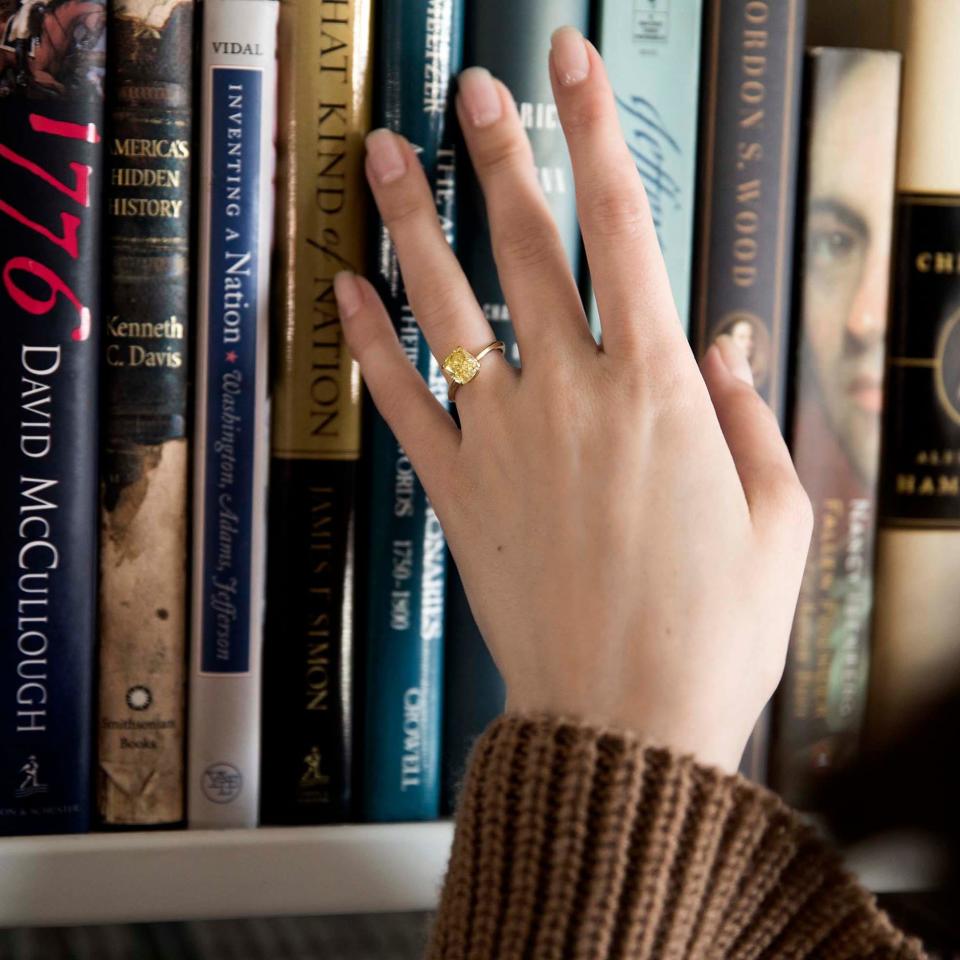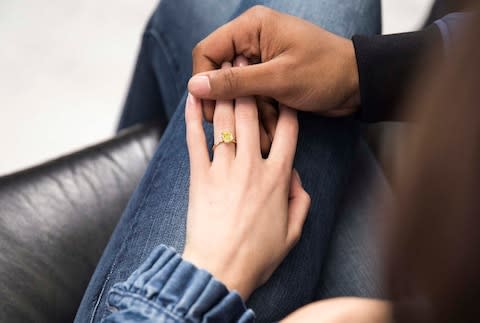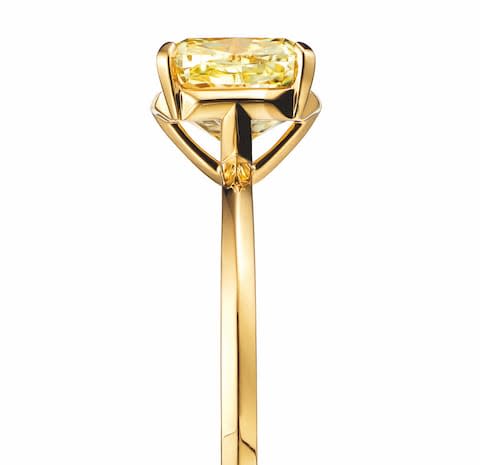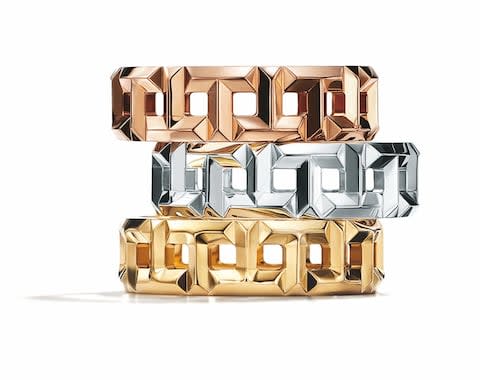Tiffany True: five things to know about Tiffany's new engagement ring

Tiffany & Co has unveiled its Tiffany True engagement ring, a new design which the brand hopes will become as well-known as its signature six-prong Tiffany setting. So what exactly is a Tiffany True cut, and what makes it so special? Here’s everything you need to know.
It’s the first new Tiffany engagement ring for 20 years
The Tiffany True is an update on the Lucida cut, the brand’s last new engagement ring, which launched in 1999. Its signature six-prong Tiffany Setting, which it dubs “the world’s most iconic engagement ring”, meanwhile, was developed in 1886, so a new design is something of a milestone in the New York jeweller’s world.
You’ll only find this diamond cut at Tiffany
The True cut was developed in-house at Tiffany, so you won’t find it anywhere else. It’s a cross between a round brilliant-cut and a rectangular emerald cut; what’s called a mixed cut. The top of the diamond (the crown) is step-cut, with straight, parallel facets, while the bottom part (the pavilion) is brilliant-cut.

“Combining the two types of cuts creates a unique light reflection that’s quite powerful but has a lovely subtlety to it as well,” says Melvyn Kirtley, Tiffany’s chief gemologist, who helped to develop the new style, a process that took over 18 months.
“You have this icy, sparkly, scintillation from the pavilion with lots of fire and brilliance, but it’s slightly diffused by the crown. It’s a good option for customers who like the subtlety and softness of an emerald cut but also want some brilliance from the round - it gives you a bit of both.”

Creating a new style of diamond means each one must be cut from a rough diamond crystal. These rough crystals are marked and sorted in Antwerp, before being moved to one of Tiffany’s cutting and polishing facilities in Asia or Africa, where computer modelling is used to determine how each rough diamond should be cut in order to maximise the yield (reduce the amount wasted).
Once cut, the diamonds are transported to Tiffany’s workshops in New York to be set and finished. And once on the shop floor, customers can find out where their stone originates from, thanks to the brand’s pledge to reveal the origins of its diamonds.
White is not the only colour
The Tiffany True is available as a white diamond on a platinum band, or as a yellow diamond on yellow gold - in sizes from 0.75 carats to six carats and beyond.
Yellow diamonds are rarer than white diamonds - and therefore more expensive - and require careful consideration about how they are cut in order to enhance their hue. Too many facets means a danger that the colour will be washed out.

“The True cut lends itself nicely to yellow diamonds,” says Kirtley. “Of course, we have to start with a nicely saturated yellow rough diamond because when you maximise the light reflection it will wash out the body colour slightly. But the powerful combination of parallel facets on the crown and brilliant facets on the pavilion gives the yellow diamonds a beautiful daffodil colour. It really makes the colour sing.”

There are secret messages in the shank
The setting was designed to complement the new diamond cut, and although simple at first glance, it features unexpected details. Designed so that the diamond sits low on the finger - in contrast to more traditional styles, which see the diamond held aloft - the band is architecturally constructed, calling to mind the New York skyline.

Viewed from the side, wearers can see a ‘T’ built into the gallery of the setting: a subtle branding sure to appeal to fans of those robin-egg blue boxes. The band meanwhile, is delicate and pared-back: all the better to let the diamond take the limelight.
“Our design team spent a long time perfecting the setting,” says Kirtley. “It’s very clean and pure but the simplest things are always the hardest to do.”
It doesn’t have to be an engagement ring at all
While Tiffany is famous for its engagement rings, Kirtley has noticed a trend among customers to buy ‘right-hand rings’, whether to mark anniversaries or other special occasions, or as a self-purchase. The Tiffany True, he says, is the ideal candidate.

“Right hand rings are definitely a trend. Customers will often look for a yellow diamond or a coloured stone, so the larger sizes of Tiffany True make it ideal, particularly if it’s stacked with a wider band,” he says. “It looks very different to a traditional engagement ring - in becomes quite substantial, more like a cocktail ring.”
To that end, the Tiffany True collection also includes a selection of bands consisting of chunky, interlocking graphic Ts, in white, yellow and rose gold. There’s also a matching bracelet and a more everyday ring in which a 0.02 carat diamond is clasped between two Ts. It may be Tiffany’s newest engagement ring, but the appeal of Tiffany True is likely to stretch far beyond brides-to-be.
Sign up for the Telegraph Luxury newsletter for your weekly dose of exquisite taste and expert opinion.
